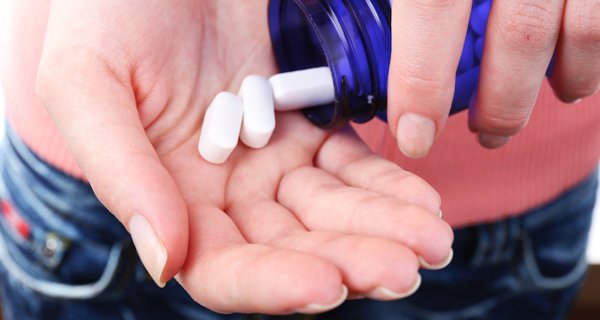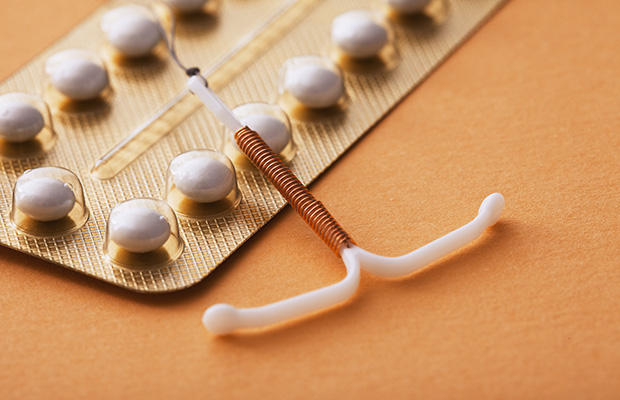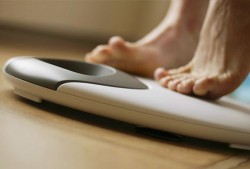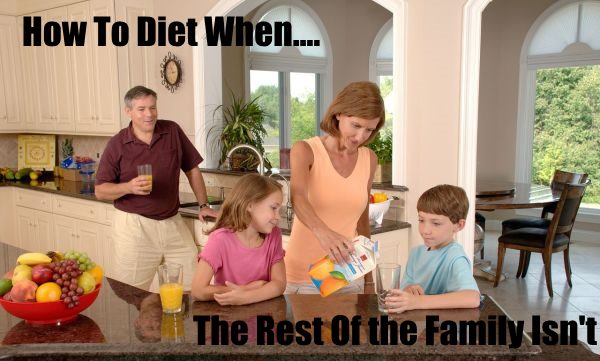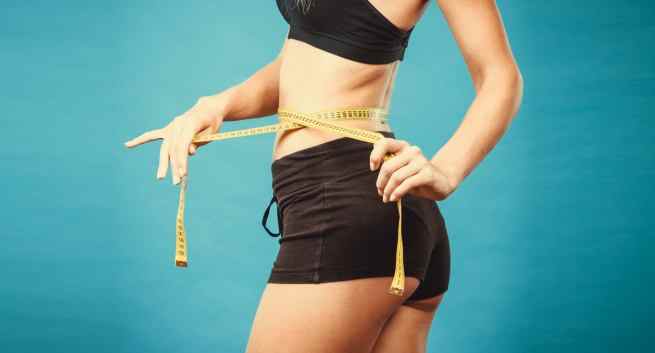How to Lose 5 Pounds in 5 Days
Many people are interested in dropping a little weight. This is especially true if you have a special occasion coming up like a class reunion, a holiday party or wedding. Although very quick weight loss in short periods of time is typically not recommended[1], you may be able to lose enough to boost your confidence or help your clothes fit a little better. Although losing 5 pounds in 5 days is unlikely, with the right dietary changes and exercise plan, you may be able to lose some weight and feel a little lighter.
Steps
Part 1 Modifying Your Diet for Quick Weight Loss
-
1
Cut calories. In order to lose weight, you’ll need to cut out some calories from your diet.
- Typically, cutting out about 500 calories daily will result in a 1-2 pound weight loss per week. [2]However, if you’re aiming to lose 5 pounds in 5 days, you may need to cut out more calories.
- Most health professionals recommend not limiting calories to less than 1200 daily. When you consume less than this amount is difficult to get adequate amounts of the required nutrients you need each day.[3]
- However, if you want to follow a very low-calorie diet just for a few days, you most likely will not have many adverse side effects.
- Typical side effects of very low-calorie diets (diets that are about 800-1000 calories daily) include tiredness, fatigue, headache, mental fogginess, and lack of energy.[4] Always consult your physician first. Do not start a very low-calorie diet without medical supervision.
-
2
Restrict carbohydrates. Studies have shown that one of the quickest diets for weight loss is a low carb diet.[5] It helps you lose more fat mass and also helps you lose some water weight.
- A low carb diet is one that limits or restricts foods that contain carbohydrates. These types of foods include grains, starchy vegetables, dairy products and fruits.
- It’s not healthy or smart to avoid all foods containing carbohydrates.[6] You’d be limiting 4 out of the 5 food groups and be unable to consume the vital nutrients your body needs to function.
- Limit foods that are mostly carbohydrates and do not provide a significant amount of other nutrients. These include grains and starchy vegetables. Nutrients from these foods can also be found in other food groups.
- If you choose to include some carbs, aim to only have 1-2 servings daily. This would be 1 ounce or ½ cup of grains[7], ½ cup of fruit[8] or 1 cup of starchy vegetables.[9]
-
3
Make your meals lean and green. For fast weight loss, limit carbs and make most of your meals “lean and green.” This means focusing mostly on lean proteins and green or non-starchy vegetables.
- Include a serving or two of lean protein at every meal. One serving is typically about 3-4 oz or the size of a deck of cards.[10]
- Lean protein foods include eggs, poultry, lean beef, pork, nuts, and seafood. Low-fat dairy products and legumes can also count as lean protein, but you may be limiting these due to their carb content.
- The other half of your meal should be a non-starchy vegetable. Aim for 1-2 servings at each meal. One serving is 1 cup or 2 cups of leafy greens.[11]
- Examples of meals fitting the “lean and green” criteria include grilled salmon over a spinach salad, stir-fry vegetables and grilled chicken or zucchini spaghetti and meatballs.
-
4
Drink adequate fluids. It’s very important to stay adequately hydrated – especially when you’re trying to lose weight quickly.
- Hydration plays a very important role in your overall health. It helps maintain your body temperature, protect your organs and even lubricates your joints.
- Most health professionals suggest consuming about 8-13 glasses of water or other hydrating fluids daily.[12] This amount will vary depending on your age, gender and activity level.
- In addition to maintaining adequate hydration status, drinking fluids can also aid in weight loss. It’s been suggested to drink 1-2 glasses of water before a meal to help cut down on your portions or if you’re feeling hungry.[13]
- Aim to only consume no-calorie, hydrating beverages like water, flavored water, decaf coffee and tea. Pass on drinks like juices, sports drinks, energy drinks, sodas, and alcohol.
-
5
Limit snacking. If you’re interested in losing 5 pounds in 5 days, it’s best to cut out or significantly limit snacking.
- Although snacks can be a part of a healthy diet, they may not allow you to lose the 5 pounds in 5 days.
- If you’re choosing to snack stick with your focus of “lean and green.” Choose foods that are higher in protein and lower in carbohydrates.
- Also, keep snacks to 150 calories or less. This will help keep you on track with your overall calorie limit.[14]
- Appropriate snacks include 1 hard boiled egg, 3 oz of beef jerky, 2 ounces of cheese or 1 high protein bar/shake.
-
6
Limit gas producing foods. Some foods are more prone to causing gas or bloating. Although this doesn’t necessarily account for weight loss on the scale, limiting these foods can help you feel slimmer.
- When digested, some foods create excess gas.[15] This may make you feel or look bloated and make it more difficult to fit into or feel comfortable in a tighter pair of pants or skirt.
- Gas forming foods include broccoli, cauliflower, Brussels sprouts, cabbage, beans, lentils, garlic, and onions.
- Also chewing gum or drinking carbonated beverages can also cause unwanted gas or bloating.
Part 2 Including Physical Activity to Support Quick Weight Loss
-
1
Go for 150 minutes of cardio weekly. In addition to cutting calories, you can use cardio exercise to help increase your overall calorie burn or deficit for the day.[16]
- The USDA recommends performing a minimum of 150 minutes of cardiovascular exercises each week or working out for about 30 minutes 5 days a week.[17]
- Aim to do moderate intensity activities. These are exercises that should cause you to sweat, be slightly out of breath and feel tired when you’re completed.[18] Depending on your current fitness level, there may be a variety of activities that could be considered moderate intensity for you.
- Examples of exercises include walking, jogging/running, swimming, using the elliptical or rowing machine, doing an aerobics class or dancing.
- You can increase this to 300 minutes weekly if you can. There is no safe upper limit for exercise. However, note that if you’re following a very restricted diet or a very low-calorie diet, you may feel too tired to exercise or fatigue quickly when you’re exercising. If you notice these side effects be mindful and take care. If you’re feeling pain or any discomfort contact your doctor immediately and discontinue all physical activity.
-
2
Increase your baseline activity. In addition to cardio exercises, it may also be helpful to increase your baseline activities. These are things you do every day and can easily increase.
- Baseline activities (like doing household chores or walking to and from your destinations) do not burn many calories by themselves. However, if you ramp up your baseline activity all day long you may see significant increases in your total daily calorie burn.[19]
- Think about ways you can move more and be more active. This might be parking farther away from your destination, taking the stairs, standing or doing exercises during TV commercial breaks or standing at your desk.
-
3
Try HIIT workouts. High-intensity interval training is a newly popular type of exercise. It burns a large quantity of calories in a shorter time and also helps increase your overall metabolic rate.[20]
- Typical HIIT workouts are shorter in duration than steady state cardio (like going for a jog) and involve both very, very high-intensity bursts of activity followed by short bursts of more moderate intensity activity.
- HIIT workouts are typically only geared towards those individuals who are already maintaining a fitness level to support higher intensities activities or are active on a regular basis.
- You can do a variety of cardio activities for an HIIT workout. For example, on a treadmill you could alternate between jogging and sprinting or running uphill.
-
4
Recover in the steam room. Many gyms now offer a steam room or sauna for their customers. This may help you relax and recover from your workout but also support a quick weight loss.[21]
- As you sweat you may lose excess water weight. This can help the numbers on the scale drop more quickly and may make you feel less bloated.
- Relax in the steam room for 10-20 minutes. Spending more time than this may cause you to become dehydrated.
- Be very careful when using the steam room, especially for weight loss. This is not a recommended method for weight loss and should be used with caution.
- In addition, excess sweating can lead to dehydration which can be dangerous. Always follow a steam room sensation with plenty of hydrating fluids.
-
These Tips Can Help You With Hair Loss
Thinning hair can be caused by many things, but rest assured that
-
Do You Buy The Food Addiction Excuse?
When it comes to the general public’s view about obesity, there’s a bi
-
How to Lose Weight With Yogurt
How to Lose Weight With Yogurt This delicious dish will
-
Tricks to Help Lose Weight
No matter what they say losing is not easy we are all looking fo
-
Coenzyme Q10 Ensuring Weight Loss
It is interesting to note that while the dangers of obesity have led
-
Finding A Quick Diet Loss Plan
A quick weight loss diet plan is rare to find. Diet pills available c
- DON'T MISS
- Just 2 Tbsp. Of THIS Mixture To Your Morning Coffee Will Burn A TON Of Calories
- Weight Loss Surgery Costs
- Weight Loss Tips For Your Mind And Body
- How to Workout at Home Using Hand Weights
- Truth About Natural Weight Loss
- How best to Prioritize loss goals
- Losing Weight Is Really Hard
- Weight Loss Tip #37 – Lose weight by skating
- Burn Fat While You Sleep is Real! Here’s How…
- Meal Plan For Fat Loss 4 Idiots
